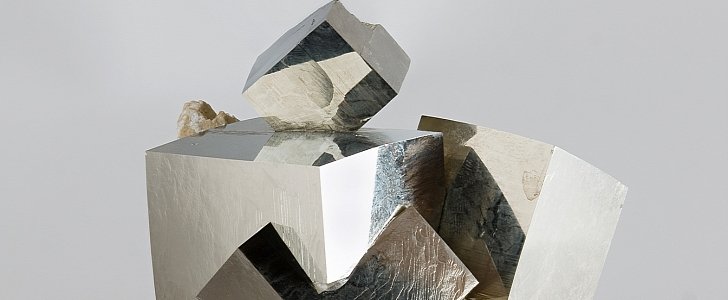Most of the drivers that get to hold the wheel of a Tesla Model S love the way it drives, and it’s not the only EV model to trigger such reactions in petrolheads. Storing electricity harvested from the sun, wind or water is a pretty good idea, especially with the intermittency of green electricity affecting the power grids. But what’s the key to all these systems?
A cheap battery - that’s the short answer. To manufacture that on a global scale scientists need raw materials found in plentiful supply. Lithium stocks deplete at a very high pace, especially since the demand for lithium-ion batteries is growing proportionally. The Swiss Federal Laboratories for Materials Science and Technology (EMPA) and Zurich scientists claim to have found a new “recipe” that may actually bring the long-awaited energy storage revolution. Just to set things straight from the very beginning, this is not the same Li-Air battery recently unveiled, which, in fact, could turn out more expensive.
Colloquially called the “fool’s gold battery,” it consists of iron, sulfur, sodium and magnesium. Considering that all these elements are in plentiful supply, the experimental battery should be a lot cheaper than the ones currently on the market. This means that giant storage batteries could be built on the cheap and used stationary in buildings or next to power plants, for instance.
The team of researchers, made of Maksym Kovalenko, Mark Walter, and their colleagues at Empa’s Laboratory of Thin Films and Photovoltaics, have combined a magnesium anode with an electrolyte made of magnesium and sodium ions. Nanocrystals made of pyrite - more commonly known as fool’s gold - serve as the cathode. Pyrite is a crystalline iron sulfide. Scientists have found that the sodium ions from the electrolyte migrate to the cathode during discharging. And when the battery is recharged, the pyrite re-releases the sodium ions.
The result? Storing electricity. EMPA claims this so-called sodium-magnesium hybrid battery already works in the lab and has several advantages. For one, the magnesium as the anode is far safer than highly flammable lithium. So far, the test battery in the lab already withstood 40 charging and discharging cycles without compromising its performance. Here’s more about its features:
“The biggest advantage, however, is the fact that all the ingredients for this kind of battery are easily affordable and in plentiful supply: Iron sulfide nanocrystals, for instance, can be produced by grinding dry metallic iron with sulfur in conventional ball mills. Iron, magnesium, sodium, and sulfur are amongst hold 4th, 6th, 7th and 15th place by the abundance in the Earth’s crust(by mass). One kilogram of magnesium costs at most four Swiss francs, which makes it 15 times cheaper than lithium. There are also savings to be made when it comes to constructing the cheap batteries: Lithium ion batteries require relatively expensive copper foil to collect and conduct away the electricity. For the fool’s gold battery, however, the inexpensive aluminum foil is perfectly sufficient.”
Colloquially called the “fool’s gold battery,” it consists of iron, sulfur, sodium and magnesium. Considering that all these elements are in plentiful supply, the experimental battery should be a lot cheaper than the ones currently on the market. This means that giant storage batteries could be built on the cheap and used stationary in buildings or next to power plants, for instance.
The team of researchers, made of Maksym Kovalenko, Mark Walter, and their colleagues at Empa’s Laboratory of Thin Films and Photovoltaics, have combined a magnesium anode with an electrolyte made of magnesium and sodium ions. Nanocrystals made of pyrite - more commonly known as fool’s gold - serve as the cathode. Pyrite is a crystalline iron sulfide. Scientists have found that the sodium ions from the electrolyte migrate to the cathode during discharging. And when the battery is recharged, the pyrite re-releases the sodium ions.
The result? Storing electricity. EMPA claims this so-called sodium-magnesium hybrid battery already works in the lab and has several advantages. For one, the magnesium as the anode is far safer than highly flammable lithium. So far, the test battery in the lab already withstood 40 charging and discharging cycles without compromising its performance. Here’s more about its features:
“The biggest advantage, however, is the fact that all the ingredients for this kind of battery are easily affordable and in plentiful supply: Iron sulfide nanocrystals, for instance, can be produced by grinding dry metallic iron with sulfur in conventional ball mills. Iron, magnesium, sodium, and sulfur are amongst hold 4th, 6th, 7th and 15th place by the abundance in the Earth’s crust(by mass). One kilogram of magnesium costs at most four Swiss francs, which makes it 15 times cheaper than lithium. There are also savings to be made when it comes to constructing the cheap batteries: Lithium ion batteries require relatively expensive copper foil to collect and conduct away the electricity. For the fool’s gold battery, however, the inexpensive aluminum foil is perfectly sufficient.”
